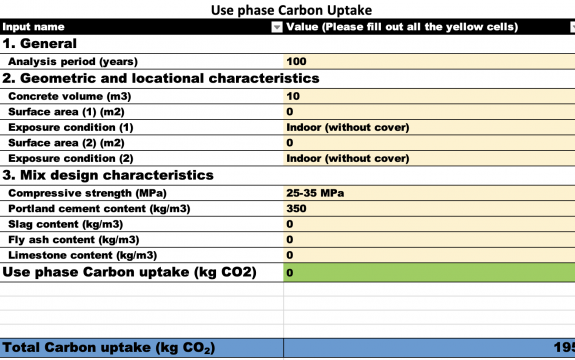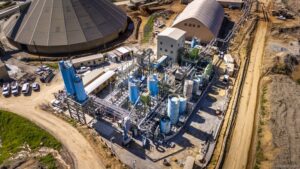A new MIT Concrete Sustainability Hub tool allows architects and designers to calculate their projects’ carbon emissions before approval decisions are taken.
It has long been known that manufacturing cement generates large amounts of carbon emissions. It was estimated in 2013 that the calcination of carbonate rocks during cement manufacture accounted for up to 5% of global CO2 emissions from all industrial processes and fossil-fuel combustion.
Since then, considerable attention has been paid to quantifying the industrial process emissions from cement production. However, the natural reversal of the process — carbonation — has received little attention until now in carbon cycle studies. Carbonation is a natural process of carbon uptake from the atmosphere by exposed concrete.
Based on new research on carbon emissions from cement materials during their entire service life, during demolition, and from the secondary use of concrete waste, MIT CSHub experts now estimate that carbonation could offset up to 43% of calcination emissions during cement production. This means the built environment is a vast carbon sink not previously accounted for in carbon cycle accounting models.
The MIT researchers have developed a state-of-the-art, material- and facility-specific calculator for carbon uptake in concrete, including carbonation from the end-of-life stockpiling of recycled concrete aggregates (RCA).
This tool can include the details of use-phase uptake and corresponding mix design components when estimating the end-of-life uptake. The calculator estimates carbon uptake through various accessible inputs—including concrete mixture, location and exposure characteristics, and stockpiling conditions.
The tool is easily downloaded and can be used by architects and designers to estimate the carbon emissions associated with their projects.
In many jurisdictions, design decisions and building project approvals are increasingly being made based on estimates of the embodied carbon associated with the materials used in the building. A far more accurate estimate of the carbon emissions and the associated readsorption of CO2 from the atmosphere is possible when the structure’s full lifecycle is considered.
The Concrete Sustainability tool can provide far more accurate carbon emissions estimates before deciding on designs or project approvals.
See also ‘Concrete as a Carbon Sink‘ – A free Fact Sheet to Download.






